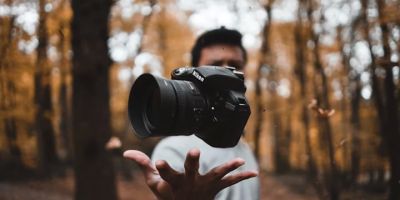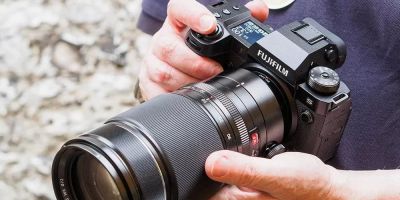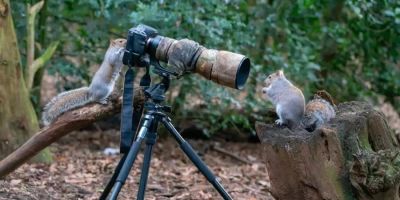How to Photograph Nature with Dramatic Lighting
As a photographer, one of the most exciting and rewarding challenges is capturing nature with dramatic lighting. Nature photography allows you to explore the outdoors while showcasing the beauty of the world around us. However, when you're aiming to capture dramatic lighting, the process requires more than just taking a photo – it involves understanding how light works and how it can enhance the atmosphere of your image. Let me walk you through how I approach this type of photography, and how you can apply some of these techniques in your own work.
1. Understanding the Importance of Lighting in Nature Photography
Lighting is one of the most critical factors in any type of photography, but when it comes to nature photography, dramatic lighting can completely transform an image. It’s about using light to enhance the natural features around you, whether that’s the soft glow of sunrise over a mountain or the stark contrast of a stormy sky above a dense forest. Dramatic lighting adds mood, depth, and intrigue to your photos, making them stand out.
As a rule of thumb, the best lighting for dramatic effects often comes from low angles – think about the soft golden hues at sunrise or the harsh shadows at sunset. It’s about playing with contrast, shadows, and how light interacts with the natural textures in your scene. Sometimes, the right light can turn a mundane scene into something extraordinary.
2. The Golden Hour: Nature’s Best Lighting
For me, the golden hour is one of the best times to shoot nature with dramatic lighting. The golden hour refers to the time shortly after sunrise and just before sunset when the light is soft, warm, and diffused. The sun is low in the sky, which creates long, stretching shadows and enhances textures in your scene. This light can give your images a magical, almost ethereal quality that adds depth and warmth to everything it touches.
During this time, I always try to capture the light’s interaction with the landscape. Whether it’s the way it touches the tops of mountains, highlights the edge of a wave, or casts dramatic shadows on a cliffside, golden hour provides the perfect lighting conditions to create stunning compositions. It’s the best time for wide-angle shots of vast landscapes or intimate portraits of plants and animals, as the soft, warm tones create a welcoming, serene atmosphere.
3. Using Harsh Lighting to Create Drama
While soft, warm light during the golden hour is stunning, sometimes harsh lighting can add a more intense, dramatic feel to your photos. Harsh midday sunlight can create strong contrasts and shadows, enhancing the texture and depth of your subject. The key is to embrace the contrast, and use it to your advantage to emphasize shapes, lines, and the play of light and shadow.
One of my favorite things to do during midday shooting is to find subjects with interesting textures, like the gnarled bark of an old tree or the rugged surface of a rock. The intense light makes these textures pop, revealing fine details that may be missed under softer light. A good tip for shooting in harsh light is to find locations with deep shadows or areas of high contrast – this will help you create striking compositions that evoke a sense of drama.
4. Experimenting with Backlighting for a Silhouette Effect
Another powerful technique I use to create dramatic nature photos is backlighting. This occurs when the light source – such as the sun – is positioned behind your subject, creating a glowing effect around the edges and turning your subject into a silhouette. Backlighting can create striking, bold compositions and often results in striking images with a sense of mystery and depth.
When photographing plants, trees, or animals, backlighting can emphasize shapes and contours. I love using this technique with subjects like flowers, trees, or animals against a bright sky. It’s especially effective at sunrise or sunset, when the sun is lower in the sky, and you can capture colorful, vibrant silhouettes against a dramatic backdrop.
5. Using Reflections to Enhance Lighting
One of my favorite ways to enhance dramatic lighting is by incorporating reflections. Reflections in water, glass, or even wet surfaces can add an additional layer of interest to your photos. The way the light interacts with these reflections can create symmetrical compositions or reveal hidden textures that might not be immediately visible in the direct light.
When I’m shooting near a body of water, I often look for reflective surfaces like lakes or rivers. These surfaces not only help intensify the light but can also add layers of color, contrast, and mood to my images. Shooting in early morning or late evening with the right conditions can give you the most striking reflections, and it's often the difference between an ordinary shot and something truly extraordinary.
6. The Role of Weather in Dramatic Lighting
Weather conditions can dramatically influence the quality of light in nature photography. A stormy sky, for instance, can add an element of drama and tension, especially if the light breaks through the clouds in beams of intense sunlight. On the other hand, fog or mist can create an eerie atmosphere by diffusing the light and adding layers of depth to your photos.
Rain or snow can also enhance the dramatic feel of a scene. After a rainstorm, the lighting can be diffused and soft, creating reflective surfaces and mist that lend a magical quality to nature scenes. I’ve learned to keep my camera gear ready for those unpredictable moments when the light suddenly changes after a storm or when fog rolls in over a mountain range.
7. Equipment Tips for Capturing Dramatic Lighting
To really capture the nuances of dramatic lighting in nature photography, having the right equipment is key. While a basic DSLR camera can work well, using a camera with good low-light performance and a lens with a wide aperture can help you make the most of available light. I prefer using a fast lens, like a 50mm f/1.8, which allows me to shoot in lower light and capture more dramatic, moody scenes with a shallow depth of field.
A tripod is also essential when shooting in low light conditions, as it allows you to keep the camera stable during slower shutter speeds. In situations where lighting is rapidly changing, like during the golden hour or just before a storm, I’ll also rely on filters like polarizers or ND filters to control the light and exposure. This helps me avoid overexposing certain parts of the image and ensures the details in both the highlights and shadows are visible.
8. Final Thoughts on Capturing Dramatic Lighting in Nature
Capturing dramatic lighting in nature photography is an art form that takes time, practice, and patience. By understanding how light interacts with the environment and experimenting with different lighting techniques, you can create truly stunning, impactful images. Whether you’re shooting in soft golden hour light or using intense midday contrasts, dramatic lighting can elevate your nature photos from the ordinary to the extraordinary. Don’t be afraid to experiment and embrace the power of light to transform your nature photography.





